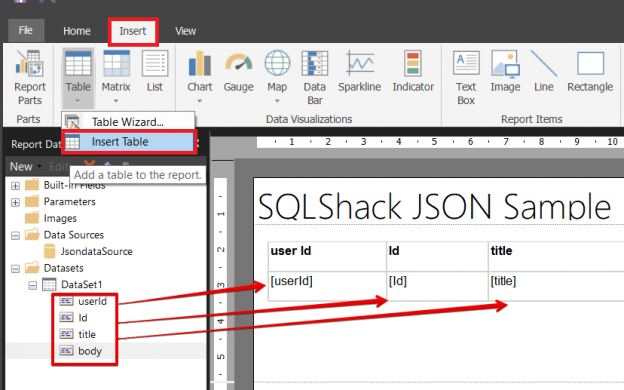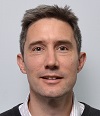





Data growth has raised the stakes in the market increasing the size of SQL Server estates that DBAs are expected to manage. Because of this, fast and efficient configuration management can be very helpful. To this end, let’s delve into this article to generate a SQL Server inventory using PowerShell.


From troubleshooting many data flow applications designed by others, I’ve seen a common pattern of over complexity with many designs. Putting aside possible risks by introducing too much complexity, troubleshooting these designs often involves opening many different applications – from a notepad file, to SSIS, to SQL Server Management Studio, to a script tool, etc. It may sound like many of these are doing a hundred steps, yet many times, they’re simply importing data from a file, or calling five stored procedures and then a file task of moving a file. This complexity is often unnecessary, as is opening many different tools when we can use a few tools and solve issues faster.
Read more »

DBAs have plenty of day-to-day tasks to do as part of administration, but one overarching task is managing the entire SQL Server environment. To do this, the full SQL Server estate must be discovered and inventoried. To accomplish that all SQL Server instances, that exist, must be found.


CRUD operations are foundation operations every database developer and administrator needs to understand. Let’s take a look at how they work with this guide.
Read more »



This article will cover the STRING_SPLIT function in SQL Server including an overview and detailed usage examples.


One calculation that you are almost guaranteed to have to produce in your career as a T-SQL developer relates to the calculation of a turnaround time. This is often a key KPI for measuring the performance of both individuals and teams, particularly when the business operates within a service-oriented sector i.e. customer support, transportation, healthcare etc. Turnaround time calculation does not only refer to business metrics rather any activity (i.e. ordering a pizza) with a recorded start and an end time can have its own turnaround time calculated. In this article we evaluate different options for calculating a turnaround time including using DATEDIFF function, creating your own user-defined function (UDF) as well as an integration with SQL Server Master Data Services.
Read more »

In this article, I’ll show you how to find and replace data within strings. I will demonstrate how to use the function SQL REPLACE, where you look for a substring within a string, and then replace it.


A SQL index is used to retrieve data from a database very fast. Indexing a table or view is, without a doubt, one of the best ways to improve the performance of queries and applications.
A SQL index is a quick lookup table for finding records users need to search frequently. An index is small, fast, and optimized for quick lookups. It is very useful for connecting the relational tables and searching large tables.
Read more »

In this article, we’ll walk-though two other important SQL aggregate function, SQL COUNT and COUNT_BIG. In the previous article of this series, we covered how to retrieve data, join tables, work with dates and times, use window functions, filter data, and much more.
Read more »

In this article, we’ll walk-through the concept of the SQL Order by clause and understand how the SQL engine works with the ordering result in a query.
Read more »

This article is an effort to discuss SQL Cast and SQL Convert functions as a follow-up to previous articles, in which we’ve discussed several SQL tips such as SQL Date, SQL Coalesce, SQL Union, SQL Join, SQL Like, SQL String etc.
Read more »

A SQL Join clause is put within a Select statement and at the end, it’s given a join condition, which tells the database how to fetch your data. The column specified within the join condition must be preceded by a table name if the column name is the same in both tables. When a column is preceded with a table name, it’s known as a qualified column.
Read more »

The SQL Like is a logical operator that is used to determine whether a specific character string matches a specified pattern. It is commonly used in a Where clause to search for a specified pattern in a column.
Read more »

In this article, we’re going to discuss the SQL ROW_NUMBER function. This is a continuation of the SQL essential series. In this guide, I’ll explain what a window function is all about, and you’ll see sample examples to understand the concepts behind the SQL ROW_NUMBER function.
Read more »

Azure Machine Learning (also known as Azure ML) is cloud-based machine learning solution of Microsoft. Microsoft Azure Machine Learning is a fully-managed cloud-based service that provides the ability to create and train predictive analytic solutions. Another advantage of Azure ML is that you can access and easily make changes anywhere in machine learning models with help of Microsoft Azure Machine Learning Studio.
Read more »

In this article, we will explore the concept of using JSON data in SQL Server Reporting Services (SSRS). This usage concept will include a different approach than the usual methodologies because we will take advantage of SQL Server R service support.
JSON is an abbreviation for JavaScriptObjectNotation. The main purpose of JSON data was to provide data transfer between server and web applications for JavaScript but today’s JSON is the most popular data interchange format. JSON offers two advantages to us. These are; light-weight text based format easily readable by humans. Currently, JSON is not only used in JavaScript applications, it is also used in all popular software programing languages like JavaScript, C++, C#, Perl, Java, Python, Php etc.
Read more »

SQL date format functions like the DateDiff SQL function and DateAdd SQL Function are oft used by DBAs but many of us never took the time to fully understand these extremely useful features. For professionals just getting started with SQL Server, these functions are some of the first to become familiar with. So hopefully this article will have a little something for everyone across the skill spectrum
Read more »

In this article, we’ll take a look into SQL truncate improvement in SQL Server 2019.
Data inserts and updates are a normal and regular task for the developers and database administrators as well as from the application. The source of the data can be in multiple forms as if direct insert using T-SQL, stored procedures, functions, data import from flat files, SSIS packages etc.
Read more »

This article on the SQL Delete is a part of the SQL essential series on key statements, functions and operations in SQL Server.
Read more »

The R language is one of the most popular languages for data science, machine learning services and computational statistics. There are several IDEs that allow seamless R development. Owing to the growing popularity of the R language, R services have been included by Microsoft in SQL Server 2016 onwards. In this article, we will briefly review how we can integrate R with SQL Server 2017. We will see the installation process and will also execute the basic R commands in SQL Server 2017.
Read more »

This article will provide a review of SQL code formatting using the SQL formatter options in SSMS
Nobody likes to read a large amount of text, even when it’s just a plain one. When reading SQL script where there is a large amount of non-formatted SQL code, the problem becomes even bigger.
Read more »

The SQL Join clause is one of the major components of the Select statement, which is used to pull data out of SQL Server
The Select keyword starts the statement. It’s often followed by a star (*) AKA splat as some DBAs call it.
Read more »

This article on the SQL Insert statement, is part of a series on string manipulation functions, operators and techniques. The previous articles are focused on SQL query techniques, all centered around the task of data preparation and data transformation.
Read more »© Quest Software Inc. ALL RIGHTS RESERVED. | GDPR | Terms of Use | Privacy